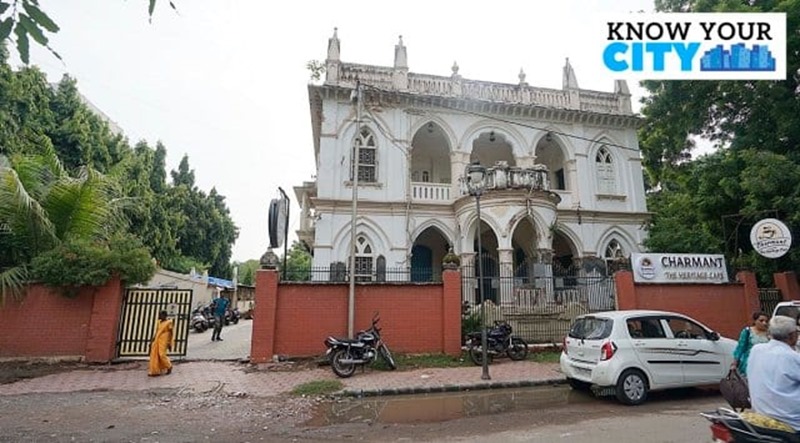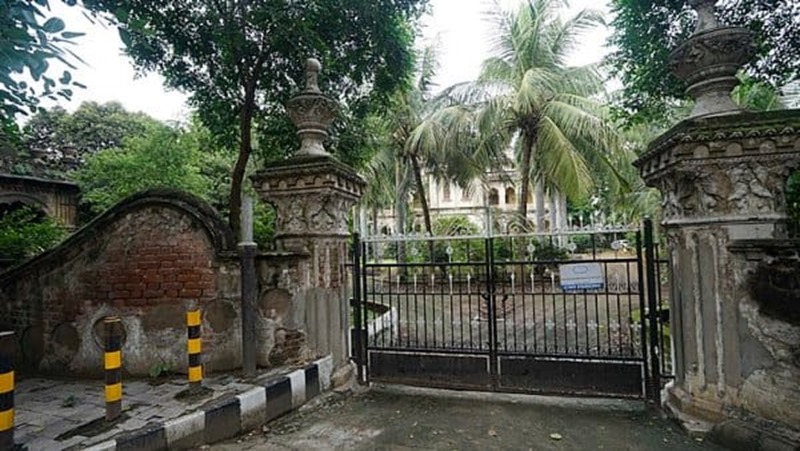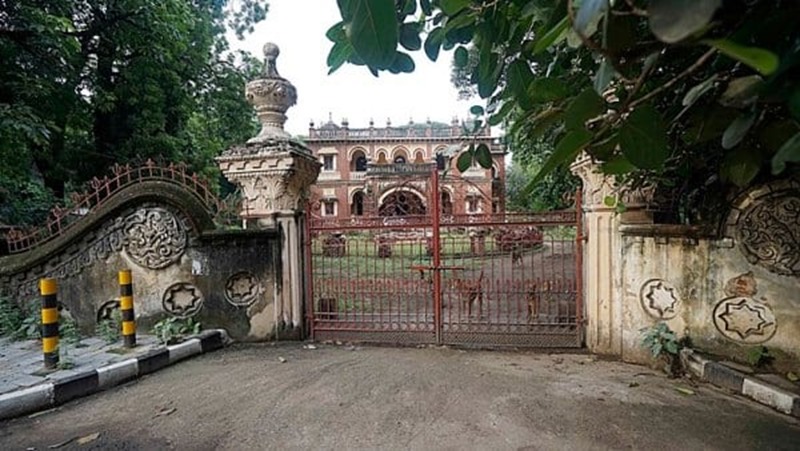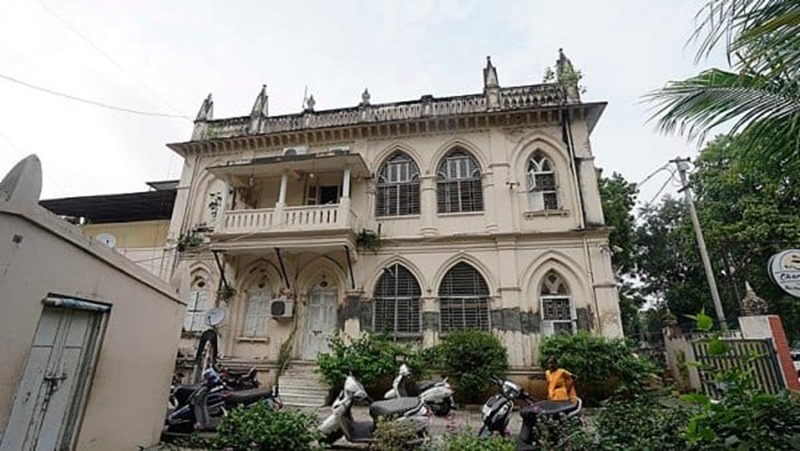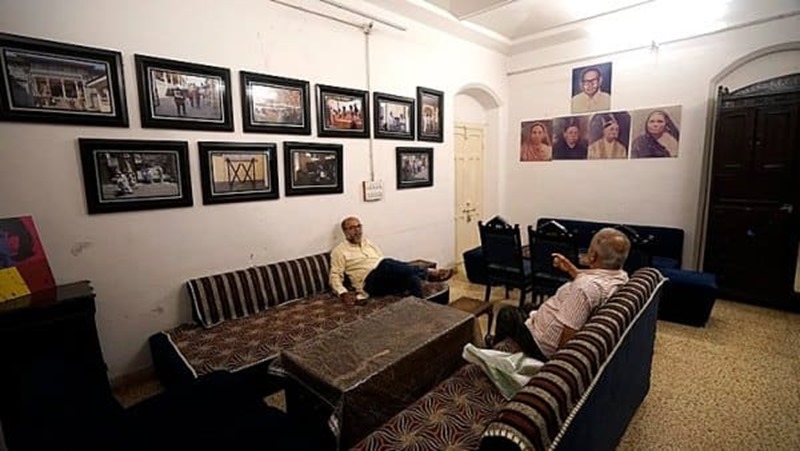The famous lane is named after Faramji Cowasji Contractor, the state civil contractor of erstwhile Baroda State. He owned a brick factory and built many of the city’s architectural delights, including the iconic dome at Maharaja Sayajirao University’s Faculty of Arts.
Written by Aditi Raja
The famous lane is named after Faramji Cowasji Contractor, the state civil contractor of the erstwhile Baroda State. (Express photo by Bhupendra Rana)
Listen to this article
00:00
1x 1.5x 1.8x
In recent times, the 30-metre-wide Faramji Road in Gujarat’s Vadodara has become an example of a ‘road widening’ gone wrong as the fund-strapped Vadodara Municipal Corporation (VMC) continues to spar with the land owners who are awaiting compensation for the acquisition made in 2017.
Even as the civic body considered withdrawing from the widening project and “returning” the parcels of land, the characteristic original 9-metre Faramji Road – the point of exit from the western end of the Vadodara Railway Junction– cannot be restored.
The famous lane is named after Faramji Cowasji Contractor, the state civil contractor of the erstwhile Baroda State, who owned a brick factory and built many of the city’s architectural delights, including the iconic dome at Maharaja Sayajirao University’s Faculty of Arts – currently the third largest masonry dome in Asia.
Nikitin Contractor says that apart from the seven bungalows, Faramji owned several other properties in the area, including the land where the present bus depot of Vadodara city stands behind the newly constructed Jan Mahal. (Express photo by Bhupendra Rana)
It is also, perhaps, the first lane in the city to be named after a Parsi and certainly the first lane to house Parsi bungalows in Vadodara as Faramji built seven unique and imposing mansions, starting around the curve of RC Dutt Road and ending into Faramji Road, for the members of his family.
Currently, the lane joins RC Dutt Road to the Indulal Patel Road that further leads to two other lanes in the vicinity named after Parsis – Rustom Patel Marg and Doctor Rustom Cama Marg. But back in the era of the state, Faramji Road was “private”. In the present day, only four of the seven bungalows continue to stand as testimony to time.
Nikitin Contractor, Faramji Contractor’s great grandson, who currently occupies one of the four bungalows where he also runs Charamant Heritage Cafe, says, “My bungalow is at least 105 years old that overlooks the Alkapuri-exit of the railway station… Back in the era when it was constructed, the railway station was farther away, having only three platforms and two trains connecting the then-Baroda and Bombay.” He recalls that a railway colony stood across the road, which was razed over the years to expand the station.
“Today, the station has expanded to six platforms and a massive exit and is bustling with activity now. During the British Period, Faramji Road was a closed lane and was separated from the main road… After independence, the local body wanted a part of the land to open to the public and my family donated the land,” he says.
This is the first lane to house Parsi bungalows in Vadodara as Faramji built seven unique and imposing mansions. (Express photo by Bhupendra Rana)
Nikitin Contractor is among the land owners in litigation with the VMC for the 2017 land acquisition when the nine-metre road was widened to 30 metres instead of the proposed 19-metre road and an additional three metres of footpath to make it 21 metres. In the process, Contractor lost a fountain and the ‘sepoy kholi’ that were part of the compound of his splendid white heritage bungalow, built in a mix of Victorian and Persian architecture.
Three other bungalows belong to the Contractor family in the vicinity – a red-brick bungalow with two mini-domes that resemble the MS University on the RC Dutt Road, currently occupied by Nikitin’s aunt Jeru Contractor; an adjoining cream bungalow also occupied by Jeru Contractor’s brother; and a joint family property on the corner of the Faramji lane. Additionally, the fourth bungalow that belonged to Nikitin’s uncle, Fali Contractor, was sold in recent years and is now in the possession of its new owner, a real-estate developer.
Nikitin Contractor says that his great-grandfather was a civil contractor in the times of Maharaja Sayajirao Gaekwad III. When Sayajirao returned from Europe, he commissioned the Baroda College and Faramji Contractor was the civil contractor who supplied bricks from his factory as well as the labour.
Faramji Road along with the streets named after Rustom Patel and Doctor Rustom Cama are the Parsi-dominated areas of Vadodara. (Express photo by Bhupendra Rana)
“The masonry dome of the Arts faculty, designed by Robert Chisholm, was also built by Faramji Contractor. He purchased a few properties within a decade along the Race Course to build seven bungalows. Two of the bungalows were given as gifts to his daughters in marriage. They have been razed and eventually, hotels and offices have come up there,” Nikitin Contractor says.
Nikitin recalls that Faramji’s only child was Pestonji Contractor who is credited with completing the Parsi Agiyari in Sayajigunj that Faramji had commissioned for the community in Vadodara and continues to have the fire lit for close to a century. Pestonji passed on the seven bungalows to two of his three sons – Pirojshah and Manekshah.
While Nikitin is Pirojshah’s grandson, his aunt Jeru Contractor is Manekshah’s daughter who occupies the red-brick two-storey bungalow with the domes – the only one of the seven bungalows that reflect the Indo-Saracenic style of the Gaekwadi era.
According to historians in the city, the bungalow was initially occupied by members of the Gaekwad royal family and then returned to the family.
Nikitin Contractor says that apart from the seven bungalows, Faramji owned several other properties in the area, including the land where the present bus depot of Vadodara city stands behind the newly constructed Jan Mahal.
Nikitin Contractor is among the land owners in litigation with the VMC for the 2017 land acquisition when the nine-metre road was widened to 30 metres instead of the proposed 19-metre road and an additional three metres of footpath to make it 21 metres. (Express photo by Bhupendra Rana)
He adds, “Faramji Contractor owned several properties in this area… We do not have an exact figure of the parcels of land he owned as they were also sold over the years. But, one can estimate his affluence from the fact that in 1917, when the British were running short of finance due to war and had issued War Bonds, Faramji contributed Rs 2 lakh to the British funds. The Maharaja (Sayajirao III) was also among those who contributed to the War Bond.”
Faramji Road along with the streets named after Rustom Patel and Doctor Rustom Cama are the Parsi-dominated areas of Vadodara. Interestingly, Vadodara’s only licensed wine shop FP Patel and Sons is also located at the end of Faramji Road which leads to the landmark Indubhai Patel Marg and Arunoday Society.
The families have also continued to preserve the vintage furniture and the antiques that are unmissable features of Parsi homes. “The Victorian influences are visible in the structure of my bungalow… We have also preserved a lot of the antique furniture that is typical of Parsi homes. Much of it is also part of the heritage coffee shop,” Niktin explains.
Meanwhile, in order to find an “amicable solution” to end the long-drawn legal battle with landowners, the VMC standing committee has approved a proposal of the Land Estate (Acquisition) department to offer Transferable Development Rights (TDR) to one petitioner in the case of the Faramji — in a first such move. The owner is yet to accept the proposal to allow the VMC to offer the same solution to other owners, including Contractor.

